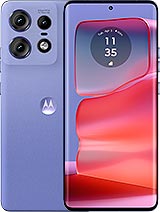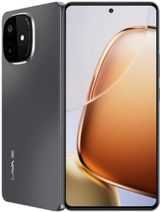Motorola Edge 60 Fusion alternatives
Tap above to see alternatives.
Oppo A5 Pro alternatives
Tap above to see alternatives.
Motorola Edge 60 Fusion

Motorola Edge 60 Fusion
-
Dimensity 7400
4 nm
-
5500 mAh
68W
-
6.67"
1220 x 2712 pixels
-
50 MP
4K@30fps
- Specs
Oppo A5 Pro

Oppo A5 Pro
-
Dimensity 6300
6 nm
-
5800 mAh
45W
-
6.67"
720 x 1604 pixels
-
50 MP
1080p@30/60fps
-
Specs

4x2.6 GHz Cortex-A78
4x2.0 GHz Cortex-A55
2x2.4 GHz Cortex-A76
6x2.0 GHz Cortex-A55
12GB 256GB (UFS 2.2)
8GB 256GB (UFS 2.2)
f/1.8, (wide), 1/1.56", 1.0µm, dual pixel PDAF, OIS
13 MP
f/2.2, 120˚ (ultrawide), 1/3.0", 1.12µm, AF
f/1.8, (wide), PDAF
2 MP
f/2.4, (depth)
1080p@30/60/120/240fps
f/2.2, (wide), 1/3.14", 0.7µm
f/2.0, (wide)
1080p@30fps
SIM1: Nano, SIM2: Nano (Hybrid)
SIM1: Nano, SIM2: Nano
11 5G bands
n1, n2, n3, n5, n8, n28, n38, n40, n41, n77, n78
10 5G bands
n1, n3, n5, n8, n26, n28, n40, n41, n77, n78
In this performance comparison, the Motorola Edge 60 Fusion with its MediaTek Dimensity 7400 (4nm) performs better than the Oppo A5 Pro with the Mediatek Dimensity 6300 (6nm), thanks to superior chipset efficiency.
Motorola Edge 60 Fusion launched with Android 15 and will receive updates, while Oppo A5 Pro has no confirmed OS update information. Motorola Edge 60 Fusion receives 4 years of security updates, while Oppo A5 Pro does not have confirmed info.
Motorola Edge 60 Fusion features a superior AMOLED display, while Oppo A5 Pro comes with an LCD panel. Both smartphones offer the same 120 Hz refresh rate. Motorola Edge 60 Fusion also boasts a brighter screen with 4500 nits of peak brightness, enhancing outdoor visibility. Notably, Motorola Edge 60 Fusion offers a higher screen resolution, resulting in sharper visuals and more detailed content.
Oppo A5 Pro features a larger 5800 mAh battery, potentially delivering better battery life. Motorola Edge 60 Fusion also supports faster wired charging at 68W, compared to 45W on Oppo A5 Pro.
Both phones feature the same IP69 rating for water and dust resistance.
¹ Scores can vary even with the same chipset due to RAM, thermals, and software optimization.










